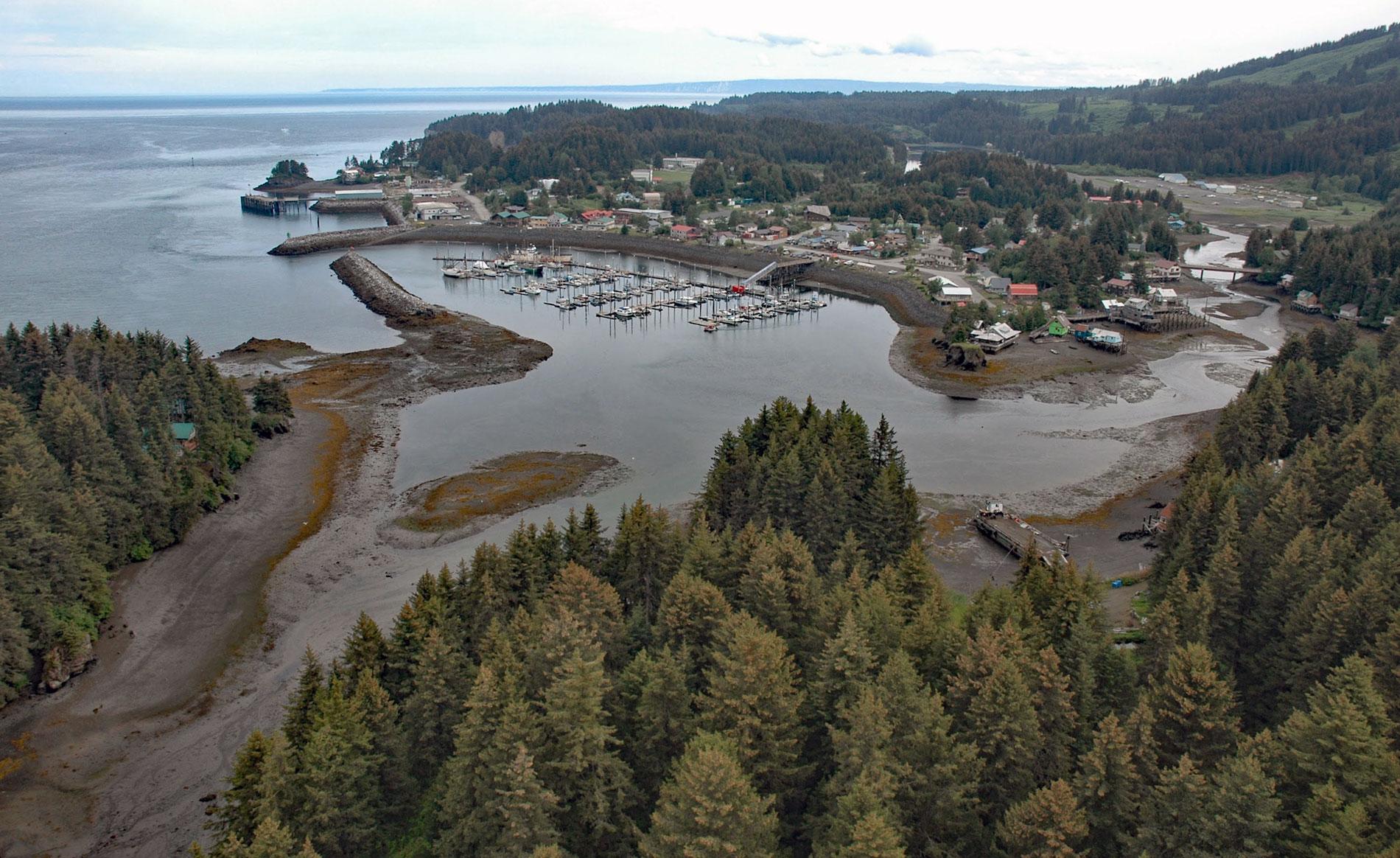Seldovia is a community situated on the eastern shore of Seldovia Bay and on the southern shore of Kachemak Bay in Cook Inlet, about 136 miles (219 km) southwest of Anchorage and 15 miles (24 km) southwest of Homer, Alaska. The name is derived from the Russian word for ‘herring’, and first appears on charts referring to Seldevoi Point and is attributed to Captain Illarion Archimandritov who was sent by Mikhail D. Tebenkov to make surveys of Cook Inlet from 1848 to 1850 for the Russian-American Company. Russian charts referred to the bay as Chesloknu Bay. Since 1909, charts by the U.S. Coast and Geodetic Survey refer to the point, bay, and village as ‘Seldovia’. The Border Ranges Fault cuts across the entrance to the bay, separating rocks of the Chugach-Prince William composite terrane to the east from the Peninsular terrane to the west of Point Naskowhak. The majority of the bay is formed by rocks of the McHugh Complex that forms a continuous strike belt from the Seldovia to Valdez and constitutes an older part of the Chugach-Prince William terrane that developed from the Permian to the Late Cretaceous period. The rocks are mostly boulder and cobble conglomerate, greywacke, and argillite with elongated slices of chert and basalt.
The archaeological record suggests a human presence in Kachemak Bay from about 3,000 years ago when an ancient maritime culture established camps and settlements. These people abandoned the bay for reasons unknown about 1,000 years ago, and after a period of several hundred years Athabaskan people from the Alaskan interior arrived and whose descendants are the historical Dena’ina. The arrival of Russians in the mid-1700s, who came for the maritime fur trade and coal mining, marked the beginning of Europeans in the area. In 1820, a Russian Orthodox church was built at Seldovia from drift logs brought from the beach. In 1869, shortly after the Alaska Purchase, a trading post was established. In 1880, the first census of Seldovia Bay by Ivan Petrof reported 68 Alutiiq people and 3 people of mixed ethnicity. These may have been former employees of the Russian-American Company that were allowed to retire there, similar to the retirement community founded at Ninilchik. In 1891, the Russian Orthodox church was rebuilt and named after Saint Nicholas. Influences of the Russian Orthodox Church may have affected the ethnic composition of the community, because various sources report the inhabitants to be Alutiiq, Dena’ina Athabaskan, Aleut, and Chugach.
By the late 1800s, Seldovia was politically and economically significant as the only ice-free port in Cook Inlet and became one of the largest cities in Alaska. Leading up to the turn of the century, the local economy was largely based on fur trapping, timber, and fish processing. In 1898, the first post office officially named the community of Seldovia. In the early 1900s, Seldovia became an important gold rush port. Small vessels of the Cook Inlet Transportation Company met ocean-going steamships at Seldovia that carried men, livestock, and freight to other settlements in upper Cook Inlet. Scandinavians developed the herring fishery, two on-shore herring salteries were built in Seldovia, and old sailing ships were used as additional floating salteries. When the herring were depleted the commercial salmon fishery expanded and the need for labor brought many immigrant workers and the town population grew to over 2,000 residents. Seldovia fishermen also experimented with catching and processing king, Dungeness, and tanner crab in the 1920s and 1930s. The role of Seldovia as a transfer port started declining when the railroad from Seward to Fairbanks was completed in 1923, and with the development of a road system and deep water port in Anchorage. Today, the town is still not connected to the road system but is a stop for the Alaska Marine Highway ferries; otherwise, the only access is by air or water taxi. Read more here and here. Explore more of Seldovia and Kachemak Bay here:

